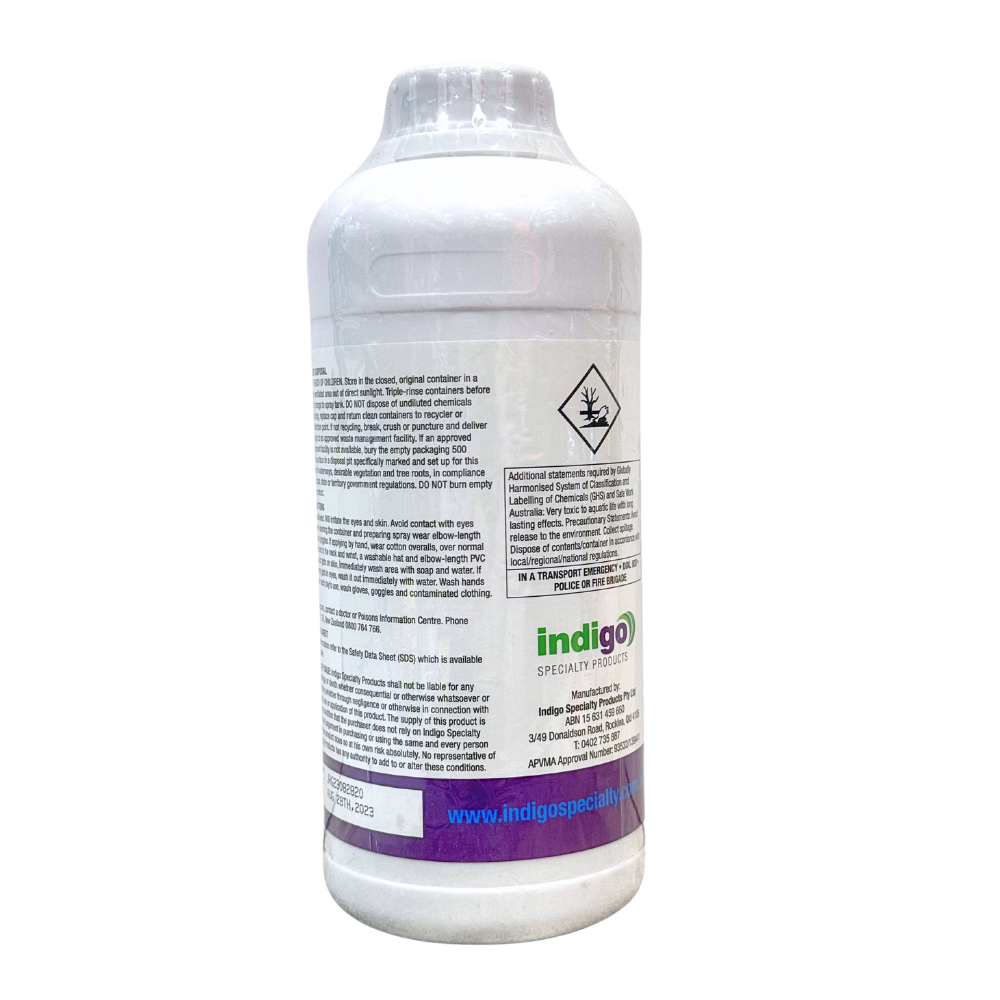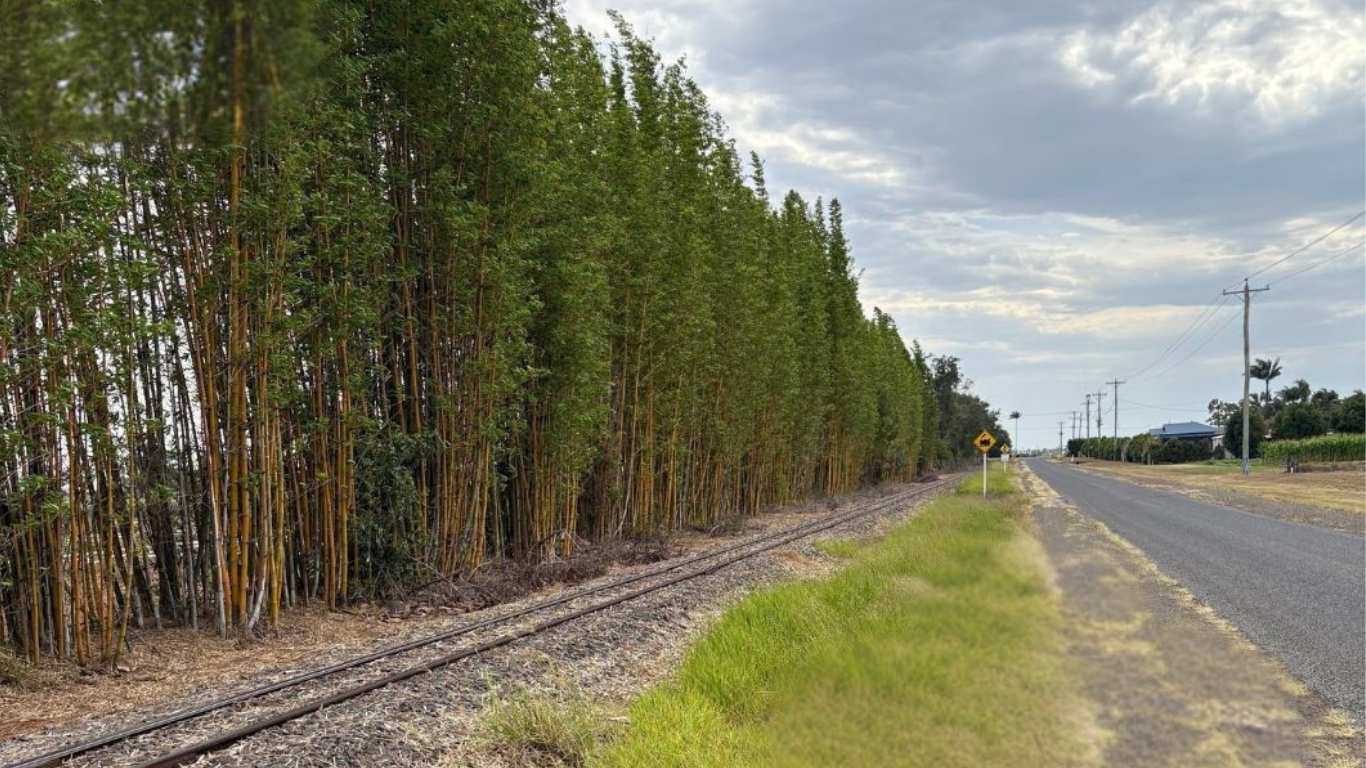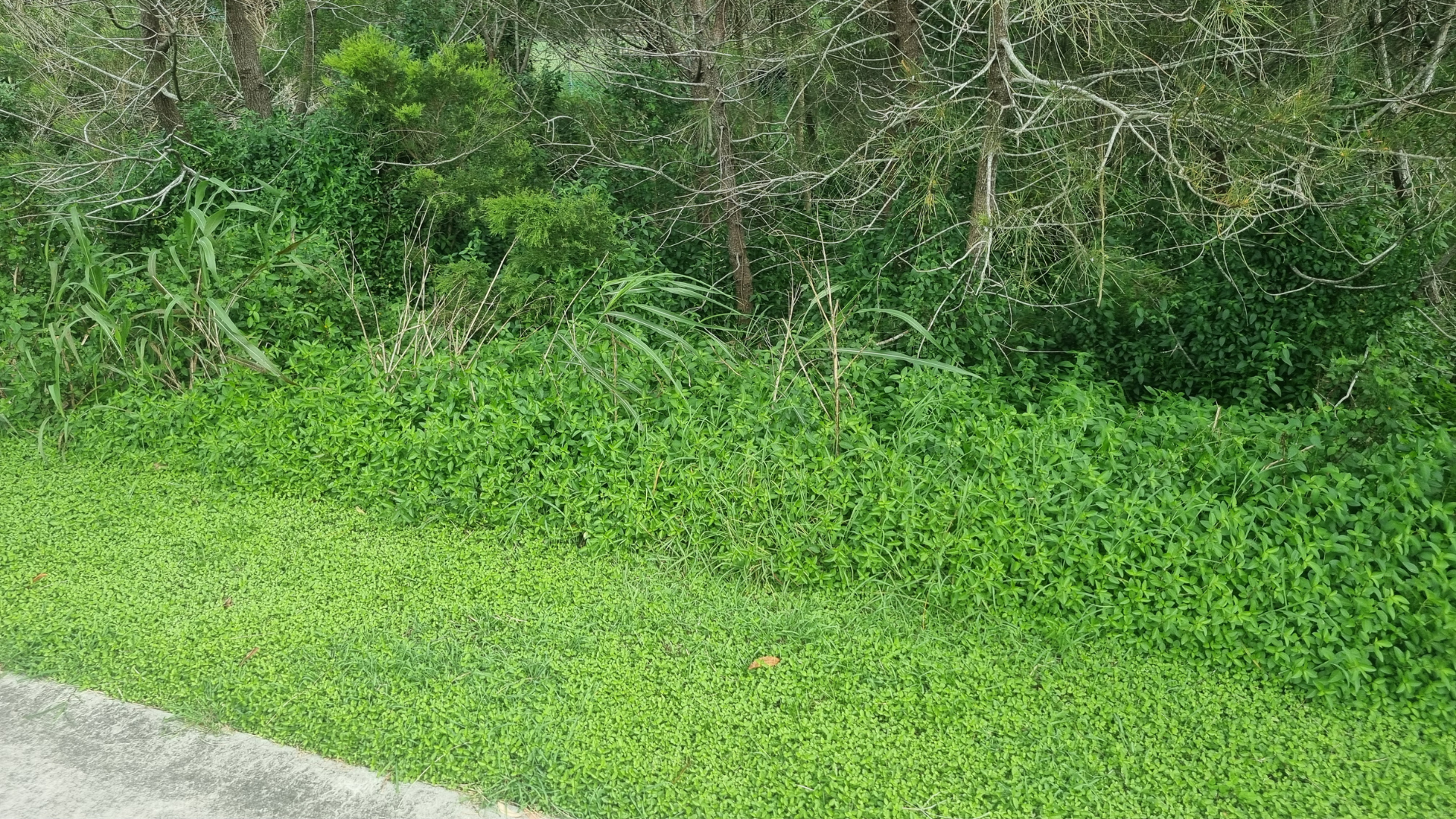


Indigo Met-Force 600WG 500g. Metsulfuron methyl
Group 2 Herbicide
Met-Force 600WG Industrial Herbicide contains 600g/kg of the active ingredient Metsulfuron-methyl and is registered for the control of Brush, Woody and Broadleaf weeds in a range of situations including pastures, rights of way, commercial and industrial areas and forestry. Met-Force 600WG Industrial Herbicide is a Wettable Granular formulation. Met-Force 600WG Industrial Herbicide is available in a 500g pack size which includes a pre calibrated measure for ease of use.
Key Features:
-
Reliable control of hard to kill weeds. Proven performer.
-
Broad spectrum of control on brush, woody and broadleaf weed species.
-
Non-scheduled chemistry. No re-entry concerns.
-
Cost effective form of weed control. Economical to treat large areas with low use rates.
-
Tank mix flexible. Can be used with Glyphosate and other non-selective herbicide options.
-
Flexibility in application techniques. Registered for use via boom, handgun, gasgun or aerial application.
-
Registered for use in a range of situations including rights of way, industrial and commercial situations, domestic and public service areas, floodplains, forestry and pastures including native pastures.
Maximising Performance:
-
Don’t graze or cut for stock food for 7 days after application.
-
Boom Spray Application: Ensure boom spray is property calibrated to a constant speed and rate of delivery to maximise thorough coverage and a uniform spray pattern. Adjust boom height to ensure correct spray overlap. Avoid spraying where drift can go onto crops, are likely to be planted to crops and non-target pastures as injury may occur. Avoid overlapping and shut off spray booms while starting, turning, slowing or stopping as injury to the crop may result.
-
Brush and herbaceous weed control: Apply when bushes/ plants are actively growing. Where treatment is delayed or bushes/plants are not actively growing due to adverse conditions (such as a period of prolonged dry weather) or if partial spray coverage occurs, results may be slow to appear and subsequent regrowth may occur. Should regrowth occur, re-treatment at the recommended rate is advised. Re-treatment of blackberries should only be undertaken once regrowth has reached 1 meter tall – this may not be until 2 years after the initial application.
-
Pasture or pasture renovation: Allow weeds to recover from grazing before application. Docks and Sorrel in particular require fresh leaf growth for adequate uptake of chemicals. Legumes will be removed from pasture if over sprayed with Met-Force 600WG Industrial Herbicide. Some grasses will be damaged in pasture sprayed with the product and biomass production may be reduced for several months. Met-Force 600WG Industrial Herbicide used on established Perennial Phalaris and/or established Perennial Cocksfoot may cause temporary yellowing and some stunting. Met-Force 600WG Industrial Herbicide can severely damage Annual and Perennial Ryegrass.
-
Aerial Application: Avoid spraying in still conditions and in winds likely to cause drift onto adjacent sensitive crops or fallow areas likely to be planted to these crops – see Crop Rotation Recommendations. Turn off spray boom whilst passing over creeks and dams. Don’t apply when a temperature air inversion is likely to occur. Use of Micronair equipment is not recommended due to greater drift potential. Apply in a minimum of 20L/ha water. Application in a higher water volume of 30L/ha will improve the reliability of weed efficacy.
-
Handgun Application: Spray foliage and canes until wet. Ensure coverage is uniform and complete. Use pressures of 550-750kPa (80-100psi) depending on target species and size of bush. Use larger nozzles and higher pressures for largest bushes.
Weeds Controlled:
Broadleaf Weeds
-
African Turnip Weed (Sisymbrium thellungii)
-
Amsinckia/Yellow Burweed (Amsinckia spp.)
-
Ball Mustard (Neslia paniculata)
-
Boggabri Weed/Dwarf Amaranth (Amaranthus macrocarpus)
-
Colomba Daisy (Pentzia suffruticosa)
-
Cape Tulip (Homeria spp.)
-
Charlock (Sinapis arvensis)
-
Chickweed (Stellaria media)
-
Chicory (Cichorium intybus)
-
Clover (Subterranean) (Trifolium subterraneum)
-
Common Sowthistle (Sonchus oleraceus)
-
Cutleaf Mignonette (Reseda lutea)
-
Deadnettle (Lamium amplexicaule)
-
Denseflower Fumitory (Fumaria densiflora)
-
Dock (Broadleaf) (Rumex obtusifolius)
-
Faba Beans (Volunteer) (Vicia faba)
-
Field Peas (Volunteer) (Pisum sativum)
-
Hare’s Ear/Treacle Mustard (Conringia orientalis)
-
Hogweed/Wireweed (Polygonum aviculare)
-
Indian Hedge Mustard (Sisymbrium orientale)
-
Lincoln Weed (Diplotaxis tenuifolia)
-
Lupins (Volunteer) (Lupinus albus)
-
Mallee Catchfly (Silene apetala)
-
Medic (Volunteer Annual Medics) (Medicago spp.)
-
New Zealand Spinach (Tetragonia tetragonoides)
-
Parthenium Weed (Parthenium hysterophorus)
-
Paterson’s Curse/Salvation Jane (Echium plantagineum)
-
Prickly Lettuce (Lactuca serriola)
-
Red Pigweed (Portulaca oleracea)
-
Rough Poppy (Papaver hybridium)
-
Saltbush (Atriplex muelleri)
-
Shepherd’s Purse (Capsella bursa-pastoris)
-
Skeleton Weed (Suppression only) (Chondrilla juncea)
-
Slender Celery (Apium leptophyllum)
-
Smallflower Fumitory (Fumaria parviflora)
-
Sorrel (Rumex acetosella)
-
Soursob (Oxalis pes-caprae)
-
Spiny Emex/Doublegee/Threecornered Jack (Emex australis)
-
Stagger Weed (Stachys arvensis)
-
Storksbill/Wild Geranium (Erodium spp.)
-
Turnip Weed (Rapistrum rugosum)
-
Volunteer Sunflower (Helianthus annuus)
-
Wild/Crow Garlic (Allium vineale)
-
Wild Turnip (Brassica tournefortii)
Woody and Brush Weeds
-
Blackberry (Rubus spp.)
-
Bitou Bush/Boneseed (Chrysanthemoides monilifera)
-
Bridal Creeper (Asparagus asparagoides)
-
Common Bracken (Pteridium esculentum)
-
Crofton Weed (Ageratina adenophora)
-
Darling Pea (Swainsona spp.)
-
Fennel (Foeniculum vulgare)
-
Golden Dodder (Cuscuta australis)
-
Gorse (Ulex europaeus)
-
Great Mullein (Verbascum thapsus)
-
Hawthorn (Crataegus laevigata)
-
Inkweed (Phytolacca octandra)
-
Kangaroo Thorn (Acacia paradoxa)
-
Lantana (Lantana camara)
-
Mistflower (Ageratina riparia)
-
Noogoora Burr (Xanthium pungens)
-
Privet (Ligustrum spp.)
-
Ragwort (Senecio jacobaea)
-
Rubber Vine (Cryptostegia grandiflora)
-
Sweet Briar (Rosa rubiginosa)
-
Tree of Heaven (Ailanthus altissima)
-
Wait-a-While (Mysore Thorn) (Caesalpinia decapetala)
Pastures, Rights of Way, and Industrial Areas
-
Capeweed (Arctotheca calendula)
-
Wild Radish (Raphanus raphanistrum)
-
Saffron Thistle (Carthamus lanatus)
-
Variegated Thistle (Silybum marianum)
-
Slender Thistle (Carduus tenuiflorus)
-
Climbing Buckwheat/Black Bindweed (Fallopia convolvulus)
SHORT DESCRIPTION
For the control of brush and broadleaf weeds in native pastures, rights of way, commercial and industrial areas and for the control of certain broadleaved weeds in winter cereal crops.
ACTIVE INGREDIENTS
600g/kg Metsulfuron methyl
APPLICATION INFORMATION
Please refer to the label for application situations and specific rates
GENERAL RATES----------
- Boom: 15-160g/ha
- Handgun: 5-15g/100L
APPLICATION SITUATIONS ----------
1. Native Pastures, Rights of Way, Commercial and
Industrial Areas – Ground Application.
* Boom: 7-80g/ha
* Handgun: 1-15g/100L
* Gasgun: 1-2g + Indigo Scrubwet
2. Native Pastures, Rights of Way, Commercial and
Industrial Areas and Flood Plains – Aerial Application
by Helicopter.
(NSW, VIC, TAS & NT ONLY)
* Boom: 50-160g/ha
* Handgun: 50-160g/ha
* Gasgun: 50-160g/ha
3. Pastures, Forests, Commercial and Industrial Areas,
Rights of Way, Domestic and Public Service Areas
* Boom: 30-60g/ha
* Handgun: 3g/100L
4. Tolerant Grass Pastures or in a Pasture Renovation –
Ground Application.
* Boom: 5-15g/ha
WEEDS CONTROLLED
WEEDS CONTROLLED =========
African Turnip Weed (Sisymbrium thellungii)
Amsinckia/Yellow Burweed (Amsinckia spp.)
Ball Mustard (Neslia paniculata)
Boggabri Weed/Dwarf Amaranth (Amaranthus macrocarpus)
Blackberry (Rubus spp.)
Bitou Bush/Boneseed (Chrysanthemoides monilifera)
Black Bindweed/Climbing Buckwheat (Fallopia convolvulus)
Bridal Creeper (Asparagus asparagoides)
Cape Tulip (Homeria spp.)
Capeweed (Arctotheca calendula)
Charlock (Sinapis arvensis)
Chickweed (Stellaria media)
Chicory (Cichorium intybus)
Clover (Subterranean) (Trifolium subterraneum)
Colomba Daisy (Pentzia suffruticosa)
Common Bracken (Pteridium esculentum)
Common Sowthistle (Sonchus oleraceus)
Crofton Weed (Ageratina adenophora)
Cutleaf Mignonette (Reseda lutea)
Darling Pea (Swainsona spp.)
Deadnettle (Lamium amplexicaule)
Denseflower Fumitory (Fumaria densiflora)
Dock (Broadleaf) (Rumex obtusifolius)
Faba Beans (Volunteer) (Vicia faba)
Fennel (Foeniculum vulgare)
Field Peas (Volunteer) (Pisum sativum)
Fleabanes (Conyza spp.)
Gorse (Ulex europaeus)
Golden Dodder (Cuscuta australis)
Great Mullein (Verbascum thapsus)
Hare’s Ear/Treacle Mustard (Conringia orientalis)
Hawthorn (Crataegus laevigata)
Hogweed/Wireweed (Polygonum aviculare)
Indian Hedge Mustard (Sisymbrium orientale)
Inkweed (Phytolacca octandra)
Kangaroo Thorn (Acacia paradoxa)
Lantana (Lantana camara)
Lincoln Weed (Diplotaxis tenuifolia)
Lupins (Volunteer) (Lupinus albus)
Mallee Catchfly (Silene apetala)
Medic (Volunteer Annual Medics) (Medicago spp.)
Mistflower (Ageratina riparia)
New Zealand Spinach (Tetragonia tetragonoides)
Noogoora Burr (Xanthium pungens)
Parthenium Weed (Parthenium hysterophorus)
Paterson’s Curse/Salvation Jane (Echium plantagineum)
Prickly Lettuce (Lactuca serriola)
Privet (Ligustrum spp.)
Ragwort (Senecio jacobaea)
Red Pigweed (Portulaca oleracea)
Rough Poppy (Papaver hybridium)
Rubber Vine (Cryptostegia grandiflora)
Saffron Thistle (Carthamus lanatus)
Saltbush (Atriplex muelleri)
Shepherd’s Purse (Capsella bursa-pastoris)
Skeleton Weed (Suppression only) (Chondrilla juncea)
Slender Celery (Apium leptophyllum)
Slender Thistle (Carduus tenuiflorus)
Smallflower Fumitory (Fumaria parviflora)
Sorrel (Rumex acetosella)
Soursob (Oxalis pes-caprae)
Spiny Emex/Doublegee/Threecornered Jack (Emex australis)
Stagger Weed (Stachys arvensis)
Storksbill/Wild Geranium (Erodium spp.)
Sweet Briar (Rosa rubiginosa)
Tree of Heaven (Ailanthus altissima)
Turnip Weed (Rapistrum rugosum)
Variegated Thistle (Silybum marianum)
Volunteer Sunflower (Helianthus annuus)
Wait-a-While (Mysore Thorn) (Caesalpinia decapetala)
Wild/Crow Garlic (Allium vineale)
Wild Radish (Raphanus raphanistrum)
Wild Turnip (Brassica tournefortii)
PRODUCT LABEL SUMMARY
MODE OF ACTION ----------
Metsulfuron-methyl, the active ingredient in Met-Force
600WG, belongs to the Sulfonylurea class of chemistry
and is a group 2 herbicide. As with other herbicides of
the sulfonylurea herbicides, the primary biochemical
target site of metsulfuron methyl is the enzyme
acetolactate synthase (ALS). ALS is a key enzyme in the
production of branched chain amino acids, which are
critical for protein synthesis and normal plant growth.
The visible symptoms of herbicidal action are arrested
growth within the first few days after application and
the appearance of chlorotic patches, followed by slow
shoot necrosis. Susceptible plants stop growth almost
immediately after post-emergence application. Plants will
be completely killed 4 to 6 weeks after application under
good growing conditions.
LABEL, SDS & TECH SHEET
SHIPPING & RETURNS
Greenway Weed Solutions has a distribution centre in QLD only, All orders, Australia-wide will be shipped from this location.
Shipping is free for all online orders Australia-wide. Bulk purchases may incur additional shipping costs - P.O.A for large quantity items.
Pickups are available from the QLD warehouse. Updates to product availability in other Australian warehouses are upcoming.
Choose options



explore our latest Blogs

Smarter growth management with Padre 270 for linear infrastructure and managed vegetation zones
As Australia’s linear-infrastructure networks expand, there is increasing need for low-impact, reliable and cost-effective vegetation management strategies. Padre 270 provides a practical, research...
Read more
Leucaena leucocephala: Weed Hygiene Case Study
Australia’s transport corridors are not just conduits for commerce—they are vectors for biological change. Leucaena leucocephala, valued as a forage crop, also threatens to invade new environments ...
Read more
Dyschoriste depressa Weed Hygiene Case Study
Australia’s extensive transport infrastructure traverses not just farmland but wetlands, forests, and urban edges. This diversity is matched by emerging weed threats such as Dyschoriste nagchana, (...
Read more
